Should I have Houseplants for Decor?
National Indoor Plant Week is here! While I’m Canadian, I can’t resist a holiday that celebrates the beauty and benefits of indoor plants. Held during the third week of September in the U.S., this week is a reminder to appreciate the indoor jungles we’ve nurtured. Whether you’re a seasoned plant parent or a curious newbie, there’s no better time to think about how to incorporate the best indoor plants into your decor.
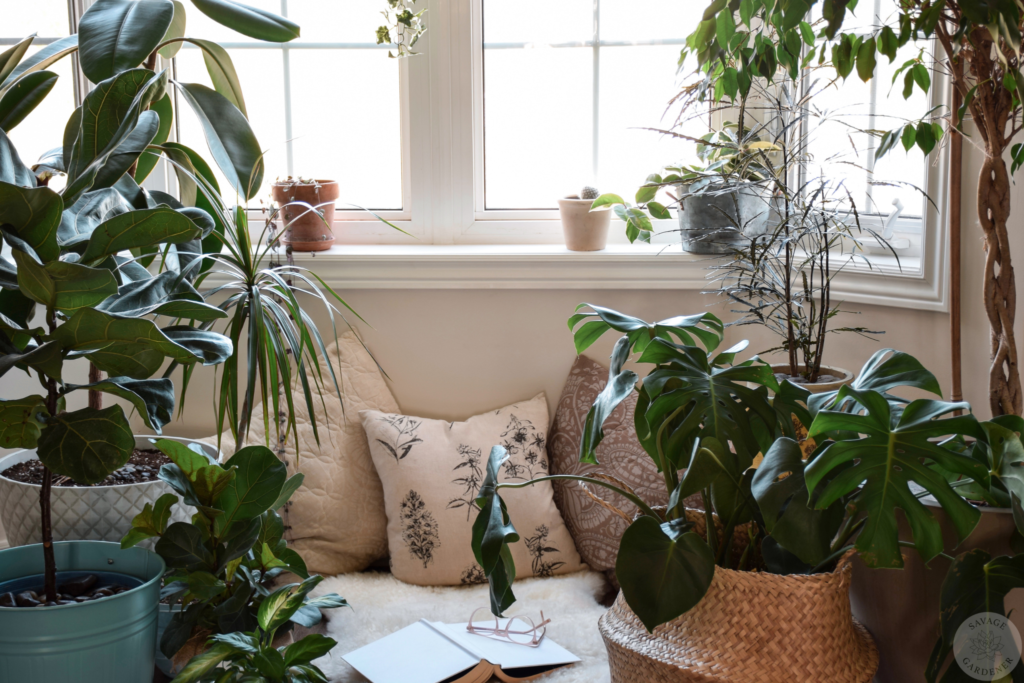
Indoor plants have become a huge trend in recent years, and it’s no surprise why. Not only do they breathe life into our homes, but they also add a touch of nature that makes any space feel inviting. From adding a pop of greenery in a minimalist room to serving as the perfect accent for boho-style spaces, plants are one of the best indoor decor elements out there. And let’s not forget their benefits! Many indoor plants help purify the air, reducing toxins while bringing a sense of calm and reducing stress.
In this article, I’ll share how to use indoor plants to enhance the decor of any room in your home. Do you have a small apartment with minimal light or a sprawling space flooded with sunlight? Don’t worry! There are indoor plants to suit every need and style. I’ll show you how to pick plants, how to style them, and how to switch up your plant game! Let’s dive into the plant-filled world of indoor decor!
Choosing the Best Indoor Plants for Your Space
Think about the light!
When it comes to decorating with indoor plants, choosing the right plant for your space is crucial. The best indoor plants aren’t just about looks—they need to thrive in the environment you’re offering them. First things first: light. Light is a huge factor in plant health, so it’s important to assess how much natural light your space gets.
Do you have large windows that flood your living room with sunlight, or are you working with a dimly lit corner? If you’ve got plenty of light, go for plants like Fiddle Leaf Figs, which love basking in bright, indirect sunlight. For low-light spaces, the best indoor plants would be things like Snake Plants or ZZ Plants, which can handle those shady spots like pros.
What about humidity?
Humidity and temperature also matter. If your home tends to be dry, especially in winter, choose plants that don’t mind the lack of humidity. Succulents like Aloe Vera and Jade Plants are great choices for this. If you live in a more humid environment or have a room like a bathroom that stays steamy, moisture-loving plants like ferns will thrive.
But did you consider size?
Another important consideration is the size of your space. Are you working with a small apartment or a room that’s already full of furniture? Choose smaller plants like Pothos that can live on a shelf or hang from a macrame planter without taking over. On the flip side, if you’ve got more open areas, larger plants like Monstera or Fiddle Leaf Figs are fantastic. The best indoor plants should always fit the size of your space.
Finally, don’t forget to think about your decor style. Are you into minimalist vibes with clean lines and neutral tones? If so, opt for plants with simple, sculptural leaves like a Snake Plant. For a more bohemian look, lush, trailing plants like Philodendrons or Pothos will complement the free-spirited decor. Whatever your style, there’s a plant that can match your aesthetic perfectly.
Using Plants as Design Elements
Now that you’ve chosen the best indoor plants for your space, it’s time to style them! Plants can be one of the most versatile design elements in your home. Whether you want them to stand out as focal points or blend seamlessly with your existing decor, there are so many ways to incorporate them creatively.
One of the easiest ways to use plants as decor is by playing with plant placement. I love layering plants at different heights—it adds depth and dimension to a room. For example, you could place a tall plant like a Fiddle Leaf Fig in a floor planter to anchor one side of the room, while smaller plants, like succulents, sit on a windowsill or bookshelf. This dynamic layering brings visual interest without overwhelming the space.
Another key aspect of using plants as design elements is thinking about symmetry and contrast. Symmetry can be very calming—try placing two identical plants on either side of a mantle or window for a balanced look. On the other hand, contrast can make your space feel lively and playful. Pair a small, dainty plant like a Pilea Peperomioides (Chinese Money Plant) with a larger, leafy friend like a Monstera, and watch the interplay of shapes add a fun, modern touch to your decor.
Think of the leaves themselves!
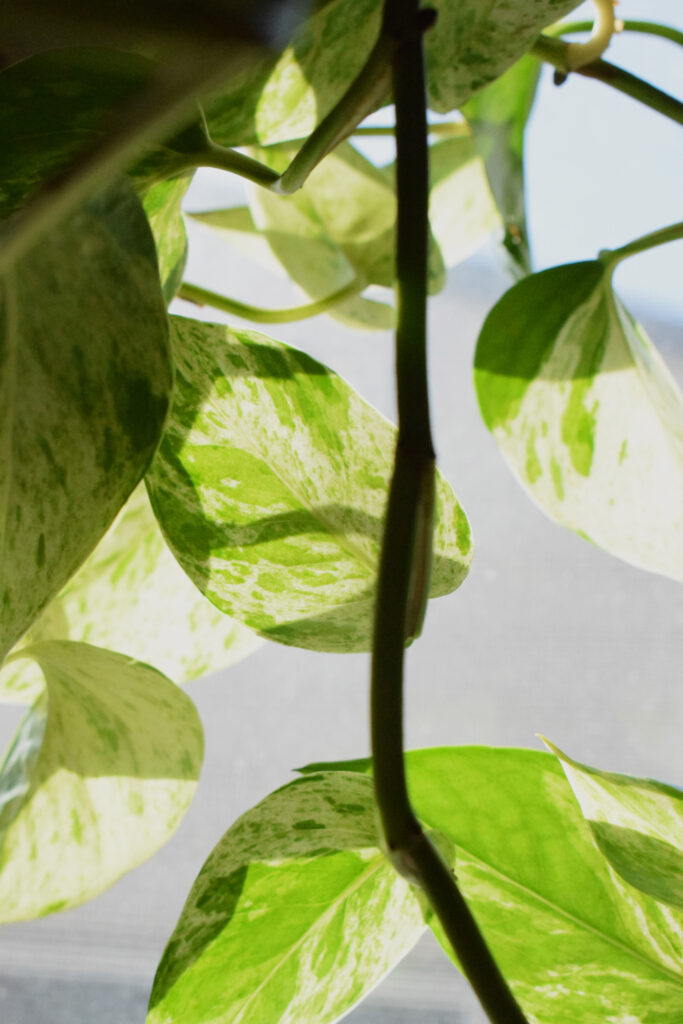
Texture is another important consideration when using plants as part of your home’s aesthetic. The best indoor plants come in a wide range of textures—smooth leaves, spiky edges, or even fuzzy surfaces like you find with a Bunny Ear Cactus. Mixing plants with different textures, alongside soft furnishings like rugs and cushions or sleek materials like metal and wood, can really elevate the overall look of a room.
And let’s not forget planters! Your choice of planter can make a huge difference in how your plant fits into your decor. For a rustic, earthy vibe, go for terracotta or natural fibre baskets. If your style leans more modern, sleek ceramic or metal planters in neutral tones can add a clean, sophisticated touch. Mixing up planter styles adds personality and ensures your plants aren’t just sitting around—they’re making a statement!
Remember, the best indoor plants aren’t just accessories—they’re living, breathing elements of your space. As you experiment with plant placement, symmetry, and planters, you’ll find that plants can transform any room into a lush, dynamic environment.
Incorporating Plants into Different Rooms
Each room in your home offers a unique opportunity to showcase the best indoor plants, and different spaces have different needs when it comes to plant decor. Let’s break it down room by room:
- Living Room: The living room is the perfect space to make a bold statement with larger plants. Think Monstera Deliciosa or a tall Rubber Tree in a chic floor planter to create a focal point. If your living room has a lot of windows, take advantage of that natural light! Place smaller plants like Pothos or Spider Plants on bookshelves or coffee tables to add greenery without overwhelming the space. Don’t be afraid to mix plants with your furniture and decor—plants can soften the edges of a room, creating a more inviting atmosphere.
- Bedroom: Your bedroom should be a sanctuary, and the right plants can help with that. The best indoor plants for bedrooms are those that improve air quality and promote relaxation. I love placing Lavender, Snake Plants, or Aloe Vera by the bed—they’re not only easy to care for, but they also have calming qualities. Stick with soft, neutral-toned pots and calming hues that won’t overpower the room’s peaceful vibe.
- Kitchen: The kitchen is an underrated space for plants, but it’s ideal for herbs that you can use while cooking! Basil, Mint, and Rosemary are not only functional but also smell amazing. Place them in small pots on your windowsill, or hang them in cute planters to save counter space. You’ll have fresh herbs at your fingertips while adding a bit of greenery to your kitchen.
- Bathroom: Bathrooms might not seem like the best place for plants, but they’re perfect for moisture-loving varieties. Plants like Ferns, Peace Lilies, and Bamboo thrive in humid environments, making them great choices for bathrooms. If you’ve got a window, place your plants where they can catch some indirect sunlight. No window? No problem—there are plenty of low-light-loving plants that will do just fine with artificial light.
- Home Office: With more people working from home, the home office has become an important space to consider. The best indoor plants for your workspace are those that are low-maintenance but still brighten up your surroundings. Pothos, ZZ Plants, and Snake Plants are excellent choices since they don’t need much care but still provide that boost of greenery to keep you feeling productive. Place a plant on your desk or a shelf to create a calming, more welcoming work environment.
Each room in your home has its own potential for plant decor. By choosing the best indoor plants for each space, you can turn your entire home into a lush, green haven!
Mixing Plants with Other Decor Elements
Incorporating plants into your decor is all about balance. One of my favourite tricks is to use plants as neutral elements—they blend beautifully with most colour schemes. Green is an easy colour to work with, and the best indoor plants can complement just about any palette, whether it’s a bold, bright room or a minimalist, muted one.
When you’re working with plants, it’s important to think about texture. I love combining soft, delicate ferns with hard materials like wood or metal. The contrast in textures makes the space feel layered and thoughtful. Similarly, pairing large-leafed plants like Monstera with softer fabrics like plush pillows or cozy throws can create a warm, inviting space. It’s all about the interplay of textures—plants can bring a room to life in ways other decor elements simply can’t.
Another great way to use plants is by integrating them into statement pieces. For example, placing a tall plant near a mirror can reflect the greenery, doubling its impact without taking up more space. Or, use hanging plants near a wall of art to draw the eye upward and create movement in the room. Lighting is another element where plants can shine (pun intended!). Positioning plants near a window or alongside floor lamps can create beautiful shadows and highlights, making the room feel dynamic and alive.
Seasonal Styling and Plant Care
Indoor plants can be styled seasonally, just like the rest of your decor. In the fall, you might opt for warm-toned pots in shades of terracotta, deep greens, or rusty oranges to complement the changing leaves outside. In winter, white or metallic planters paired with green foliage can create a frosty, serene vibe. Spring and summer are great for vibrant, colourful planters to match the blooming flowers.
However, seasonal styling doesn’t just apply to pots and planters—it also affects plant care. The best indoor plants will need a little extra TLC as the seasons change. In the fall and winter, when daylight hours are shorter, you may need to move your plants closer to windows. If that doesn’t work you can also supplement with grow lights to make sure they’re getting the light they need. You’ll also want to be mindful of temperature and humidity levels. Many indoor plants, especially tropical varieties, prefer warmer, more humid conditions, so consider misting your plants or using a humidifier in the drier winter months.
Rotating plants seasonally is also a good way to refresh your decor and give each plant its moment to shine. If a plant is thriving in the spring, move it to a more prominent spot in your home. When it’s time to adjust for winter light, bring those plants closer to their light sources while still keeping your decor stylish. By making small changes to both your styling and care routines, you can ensure that the best indoor plants stay healthy and your home remains beautifully decorated all year round.
Creating Indoor Plant Displays and DIY Projects
Creating indoor plant displays can be a fun way to personalize your home. I’m a big fan of grouping plants of varying heights to create a dynamic, layered look. For example, place a tall Rubber Tree in a floor planter next to a shorter Pothos hanging from a macrame hanger, and then add a small succulent on a nearby shelf. This mix of heights adds depth to your decor and makes each plant stand out in its own way.
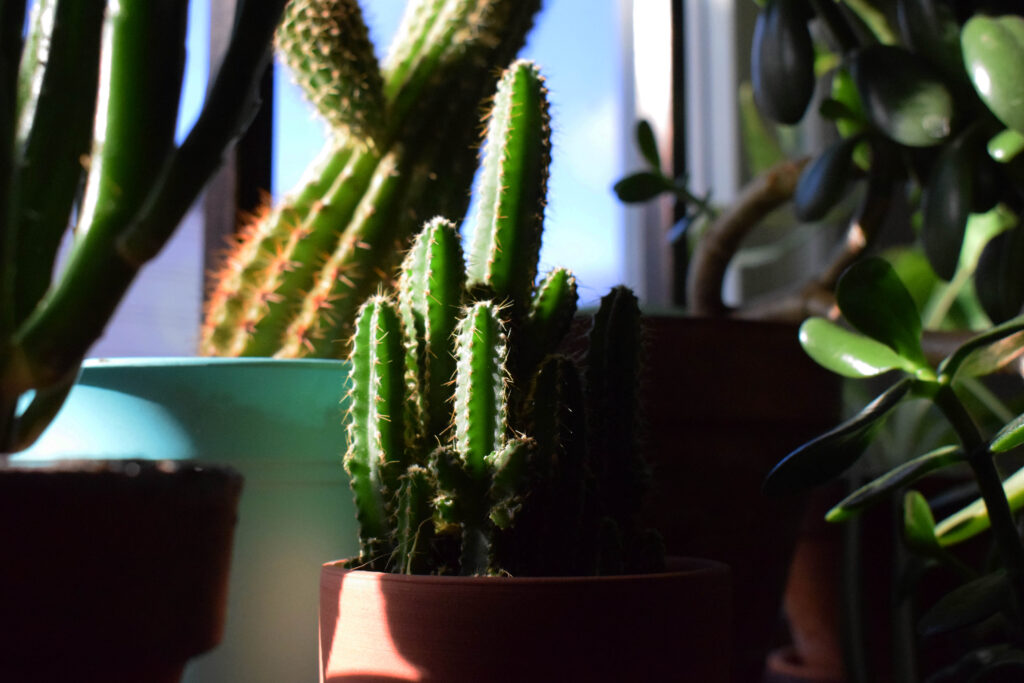
Another great way to maximize space is by going vertical with your plants. Hanging plants like Boston Ferns or String of Pearls can add greenery without taking up floor or shelf space. Vertical plant walls or shelving units dedicated to plants are also excellent ways to showcase a variety of the best indoor plants in one stylish display.
If you’re feeling crafty, there are so many fun DIY projects you can do to personalize your plant displays. Painting pots is a quick and easy way to customize your plants and match your decor. You can also try your hand at creating macrame plant hangers, which not only look beautiful but also save space. For those with smaller plants, building terrariums is a fun and creative way to house them while adding a unique, decorative element to your home. Whether you’re a DIY enthusiast or just looking to spruce up your space, there’s no shortage of ways to display the best indoor plants in your home.
Celebrating National Indoor Plant Week
National Indoor Plant Week is the perfect time to appreciate the beauty, health benefits, and versatility of indoor plants. Whether you’re just starting your plant collection or looking to add a few more green friends to your home, incorporating the best indoor plants into your decor is a long-lasting, eco-friendly way to refresh your space.
Plants don’t just enhance the look of your home—they can improve your mood, purify the air, and bring a sense of calm. Even though National Indoor Plant Week is an American holiday, there’s no reason we can’t celebrate worldwide! Use this time to explore new plants, try out some of the tips in this article, and enjoy the many benefits that indoor plants bring.
So, whether you’re rearranging your living room plants or starting a new herb garden in the kitchen, National Indoor Plant Week is the perfect excuse to embrace your love of greenery. After all, the best indoor plants are the ones that make your home a happier, healthier place to be.
Discover more from Savage Gardener
Subscribe to get the latest posts sent to your email.
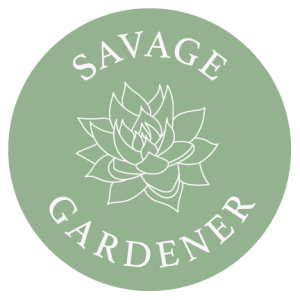
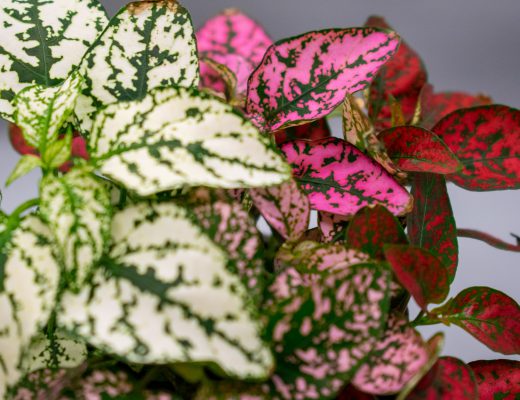
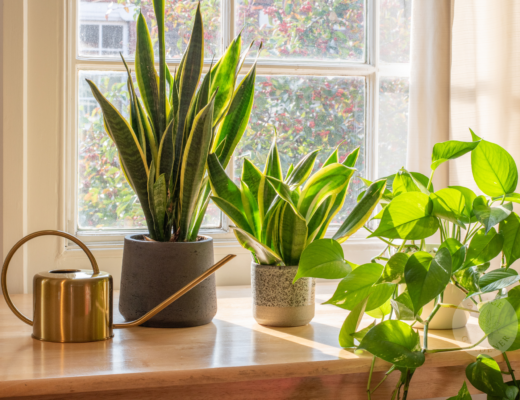
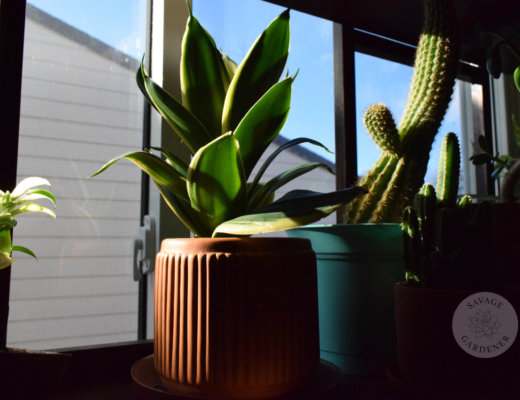
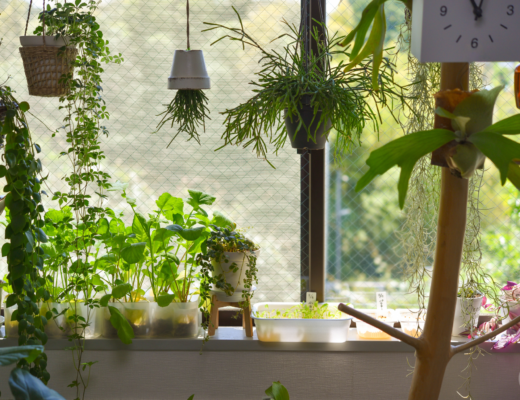
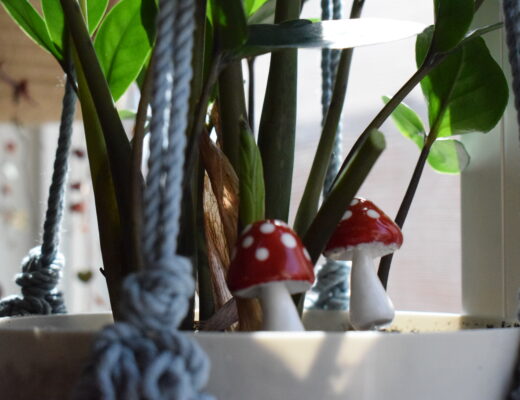
2 Comments
Dorothy
September 16, 2024 at 2:17 pmI brought in my fern….it’s a start!
Brianna Rockett
September 17, 2024 at 5:32 pmThat’s good cause it’s getting cold!